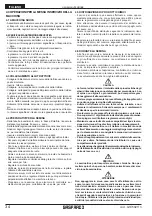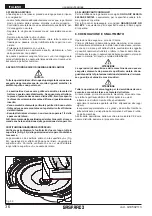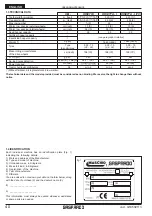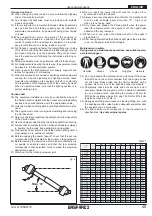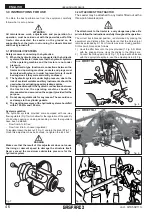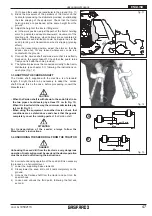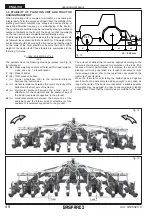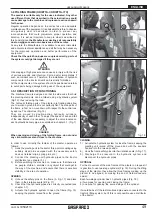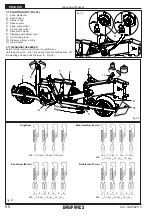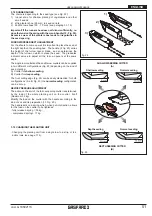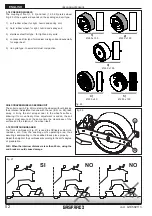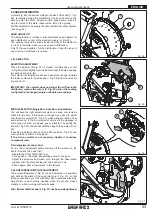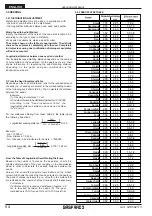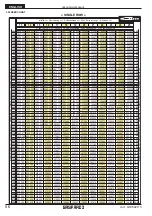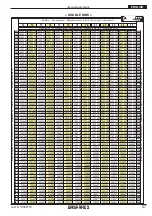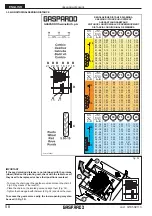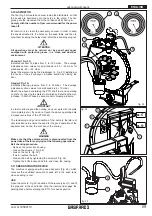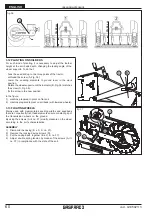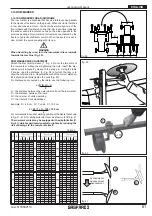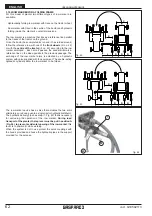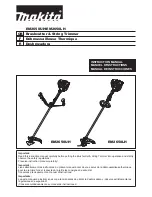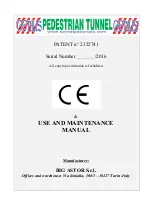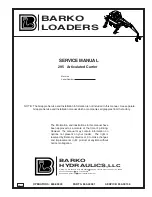
USE AND MAINTENANCE
48
ENGLISH
g
cod. G19502113
3.5 STABILITY OF PLANTING UNIT AND TRACTOR
DURING TRANSPORT
When a planting unit is coupled to a tractor, so becoming an
integral part of it for the purposes of road travel, the stability of the
planting unit-tractor complex may change and cause driving or
operating difficulties (rearing up or side-slipping of the tractor).
The condition of equilibrium can be restored by placing a sufficient
number of ballasts on the front of the tractor so that the weights
on the two tractor axles are distributed sufficiently evenly.
To work in safety the instructions given in the highway code should
be followed; these prescribe that at least 20% of the weight of the
tractor alone should be borne by the front axle and that the weight
on the arms of the hoist should not be more than 30% of the
weight of the tractor itself. These factors are summarized in the
following formulas:
Z > [M x (s1+s2)]-(0.2 x T x i)
(d+i)
The symbols have the following meanings (please see Fig. 14
for reference):
M
(Kg) Mass weighing on arms off hoist with full load (
mass, see cap. 1.4 Identification).
T
(Kg) Mass of tractor.
Z
(Kg) Total mass of ballast.
i
(m)
Tractor wheelbase, that is, the horizontal distance
between the tractor axles.
d
(m)
Horizontal distance between the centre of gravity of the
ballast and the front axle of the tractor.
s1
(m)
Horizontal distance between the inferior point of
attachment of the equipment and the posterior axle of
the tractor (equipment supported to the ground).
s2
(m)
Horizontal distance between the barycentre of the
equipment and the inferior point of attachment of the
equipment (equipment supported to the ground).
fig. 14
0,2 T
Z
T
i
s1
s2
d
M
s2
=
430 mm
fig. 15
fig. 16
The amount of ballast that should be applied according to the
formula is the minimum required for circulation on the road. If for
reasons of tractor performance or to improve the set-up of the
planting unit during operation it is thought necessary to raise
these values, please refer to the registration document of the
tractor to check its limits.
When the formula for calculating the ballast gives a negative
result it will not be necessary to add any weight. In any case, as
long as the limits of the tractor are respected, a suitable quantity
of weights may be applied in order to ensure greater stability
during travel. Check that the tractor tyres are suitable for the load.
Summary of Contents for ORIETTA
Page 4: ...cod G19502113 g 4...
Page 37: ...37 g Notes cod G19502113...
Page 38: ...cod G19502113 g 38...
Page 71: ...71 g Notes cod G19502113...
Page 72: ...cod G19502113 g 72...
Page 105: ...105 g Notes cod G19502113...
Page 106: ...cod G19502113 g 106...
Page 139: ...139 g Notes cod G19502113...
Page 140: ...cod G19502113 g 140...
Page 173: ...173 g Notes cod G19502113...
Page 174: ...cod G19502113 g 174...

